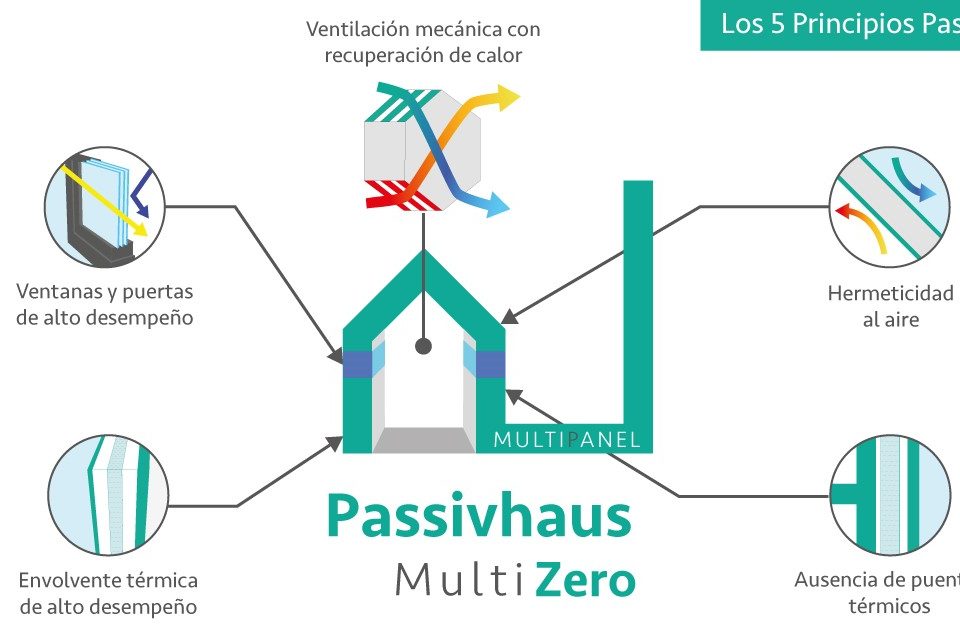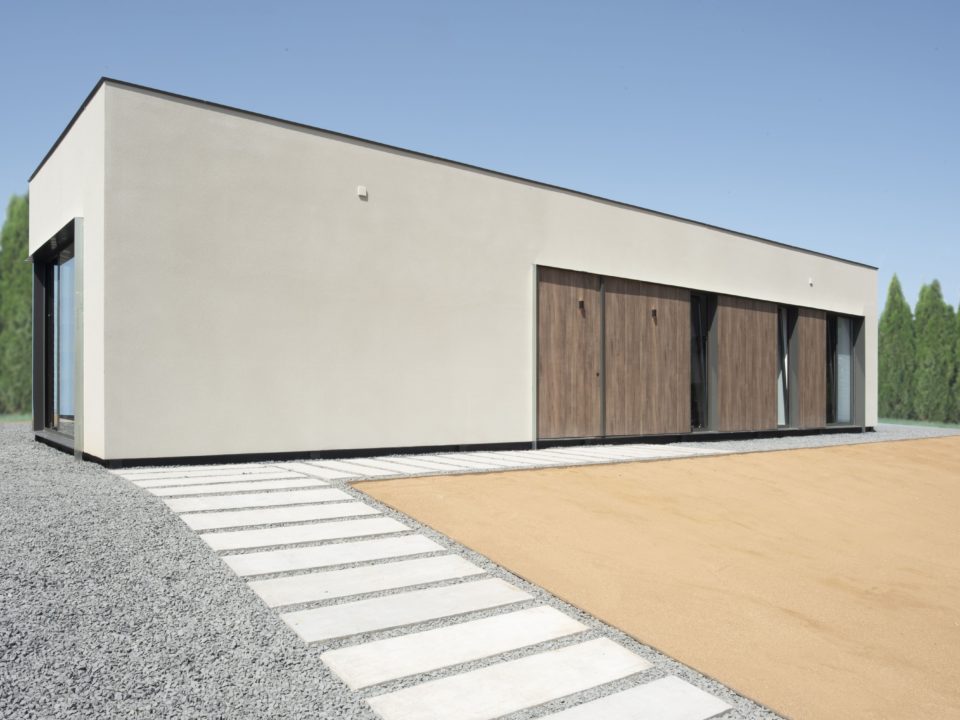Passivhaus is a construction model applicable anywhere, regardless of the climate of the area, with which to achieve nearly zero consumption buildings, both new and rehabilitated. It is the strictest certification on the market in terms of energy efficiency and comfort. Some European countries are starting to use this standard as a reference to define a nearly zero consumption building.
It only establishes a series of requirements or limitations that must be met, regardless of the construction system used. It is an easy to understand principle.
The 5 basic principles of the Passivhaus Standard:
1. High-performance thermal envelope
The coffee machine retains heat through electrical resistance, the active principle, while the thermos flask retains heat thanks to its thermal insulation properties, the passive principle.
2. High-performance windows and doors
The windows and doors used are double or triple glazed and filled with an inert gas to reduce the transmission of temperatures between the interior and exterior, thus eliminating the gaps that are the weak point in the building or housing envelope.
Mechanical ventilation with heat recovery
Both people and appliances generate heat, which is used by the ventilation system, which preheats the incoming clean air before expelling the stale air.
The amount of energy needed to condition the spaces is so small that we could cover it with a small stove without the need for a conventional system of radiators or underfloor heating, with the corresponding economic savings that this entails.
In a Passivhaus building, an efficient ventilation and air renewal system is used, guaranteeing the desired temperature and air inside the house, without losing heat or cold.
4. Air tightness:
The materials used for the housing or building envelope must achieve a high efficiency of the mechanical ventilation system.
It is important to seal all air inlets that may leak through windows, gaps or cracks. This is checked by performing air tightness tests, to comply with the standard, the result must be less than 0.6 air renewals per hour at a pressure differential of 50 Pa.
5. Absence of thermal bridges.
Thermal bridges not only occur in general elements such as walls, floors or ceilings, but also in the joints that do not have thermal insulation. They produce unwanted losses or gains, where temperatures are usually lower than the rest of the envelope.
To avoid an absence of thermal comfort inside the house or building, they are treated and controlled by means of a thermographic camera.
The main advantages of Passivhaus certification are:
Energy, economic and environmental savings.
Improved quality of construction.
Long-term investment and profitability.
High comfort and well-being.
Air quality and health.
Access to green mortgages.
In conclusion: we can choose to comply with the CTE values in force or demand more. Doing things right, building well, is not more expensive. Building badly is more expensive for users.
We, the manufacturers of building materials, have to adapt quickly to the new requirements, offer construction solutions with high thermal and acoustic insulation performance, industrialize construction to help the builder to install and install quickly and cleanly, which saves time and money.
Multizero is our panel solution with high thermal and acoustic insulation performance, ideal for Nearly Zero Energy Consumption (EECN) and Passivhaus constructions.
Ana Bodoque
Technical Department
MULTIPANEL INTERNACIONAL MADRID, S.L.











